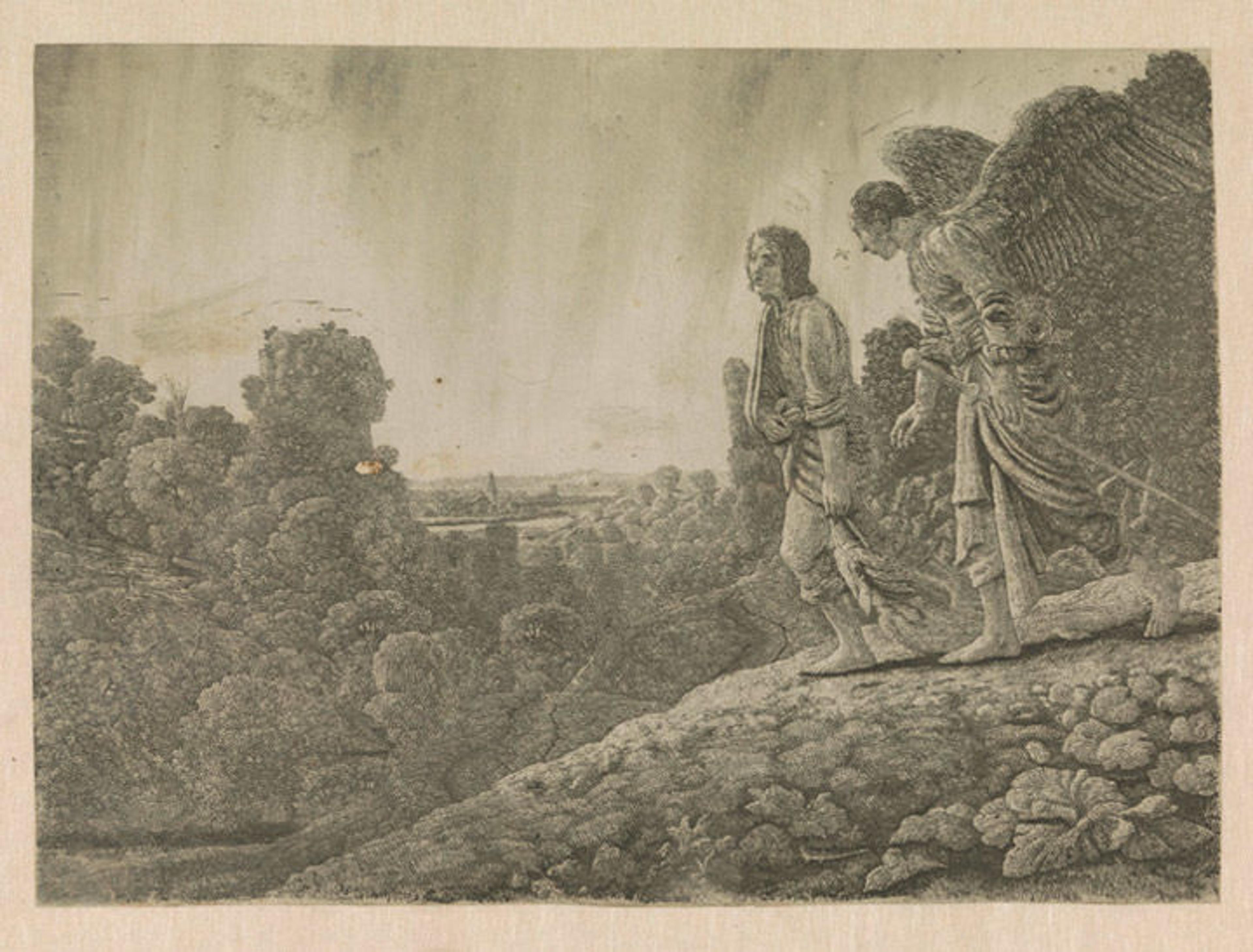
Hercules Segers (Dutch, ca. 1590–ca. 1638). Tobias and the Angel, ca. 1630–33. Line etching printed in olive green with tone and highlights; first state of six. Rijksmuseum, Amsterdam; transferred from the Koninklijke Bibliotheek, collection Pieter Cornelis Baron van Leyden (1717–1788), 1816 (inv. no. RP-P-OB-796)
«Hercules Segers and Rembrandt were the two most experimental printmakers of their time, and Segers's extraordinary etchings no doubt inspired Rembrandt to push his own approach to the medium to even higher levels of innovation. Though historians do not officially know whether the two ever met, it seems likely that they did, as their artistic careers overlapped for a period of about 10 to 15 years. They even briefly coincided in the same cities twice: in Amsterdam, around 1631, and in The Hague, in 1632.»
We know that Rembrandt greatly admired Segers's work and that he owned eight paintings by the artist. The inventory taken of Rembrandt's possessions as he went through bankruptcy in 1656 listed the following works found throughout Rembrandt's home:
"A small landscape by Hercules Segers" in the entrance hall
"A small group of trees by Hercules Segers" and "Some small houses by Hercules Segers," both in the antechamber
"Two small landscapes by Hercules Segers" in the room behind the antechamber
"A large landscape by Hercules Segers" and "A landscape in grisaille by Hercules Segers," both in the room behind the parlor
"A small landscape by Hercules Segers" in the antechamber of the art room
While organizing the upcoming exhibition The Mysterious Landscapes of Hercules Segers, new archival research revealed that Segers owned a painting of a priest by Rembrandt that the latter sold in 1631, which indicates that it must have been an early painting of Rembrandt's.
Rembrandt not only owned the printing plate to Segers's Tobias and the Angel, but he reworked it as well, changing the subject matter to The Flight into Egypt and redrawing much of the landscape in drypoint.

Hercules Segers (Dutch, ca. 1590–ca. 1638); Rembrandt van Rijn (Dutch, 1606–1669). Tobias and the Angel / The Flight into Egypt, ca. 1653. Etching reworked with drypoint by Rembrandt, printed on vellum; third state of six. Musée du Louvre, Paris, Department of Graphic Arts, Edmond de Rothschild Collection (inv. no. 2370 L.R.)
We can note Rembrandt's additions even better in a later impression in The Met collection.

Rembrandt van Rijn (Dutch, 1606–1669). The Flight into Egypt, altered from Tobias and the Angel by Hercules Segers, ca. 1653. Etching reworked with drypoint and burin by Rembrandt; sixth state of seven, Plate: 8 7/16 x 11 in. (21.4 x 28 cm); Sheet: 9 1/16 x 11 1/2 in. (23 x 29.2 cm). The Metropolitan Museum of Art, New York, Rogers Fund, 1919 (19.19.4)
One can still see the outlines of the angel's wings from Segers's image in the foliage of Rembrandt's print. Such reworking of an earlier master's print, especially an admired one, may appear to our modern eyes close to sacrilege, but in the 17th century an artist like Rembrandt could both admire and also compete and try to outdo those who came before him.
Related Links
The Mysterious Landscapes of Hercules Segers, on view at The Met Fifth Avenue from Febraury 13 through May 21, 2017
Now at The Met: "Hercules Segers: An Imaginist in a Land of Realists" (January 12, 2017)
Compare different impressions of Hercules Segers's work in an interactive web feature, Infinite Variations: A Closer Look at Segers's Prints, composed by Robert G. Erdmann, senior scientist at the Rijksmuseum, Amsterdam.